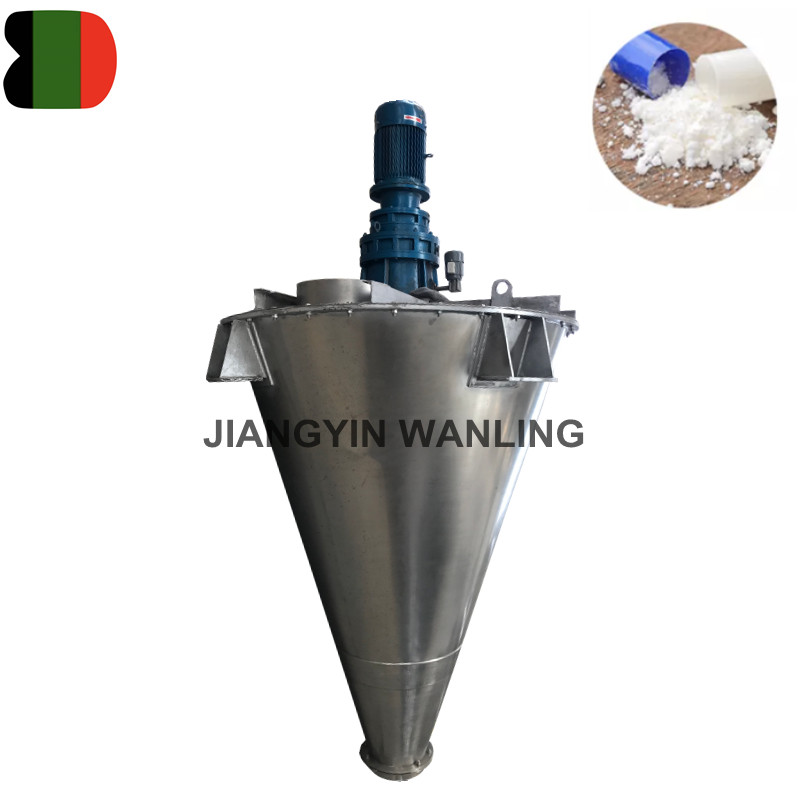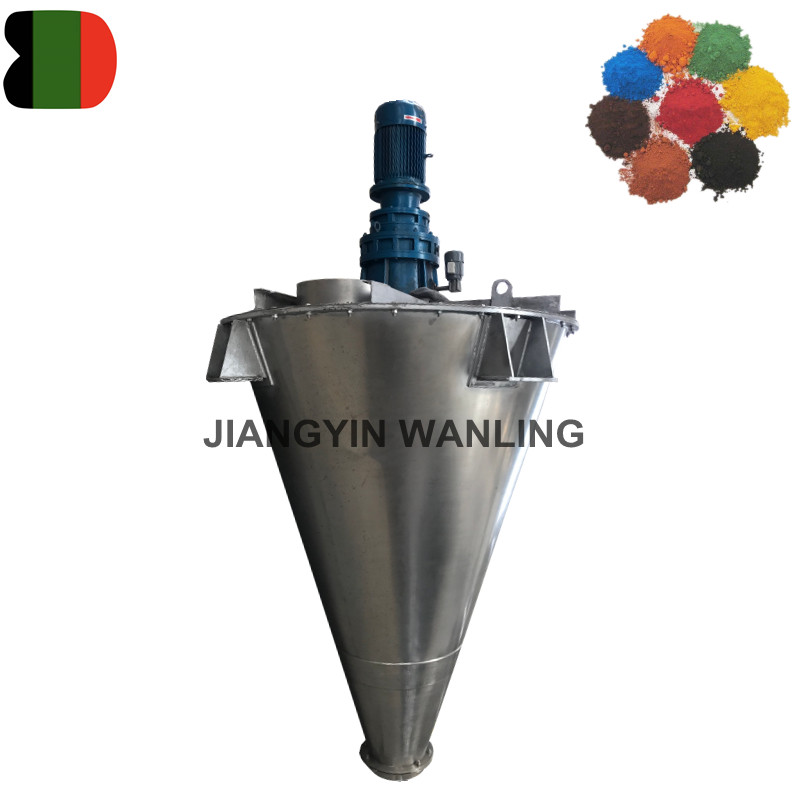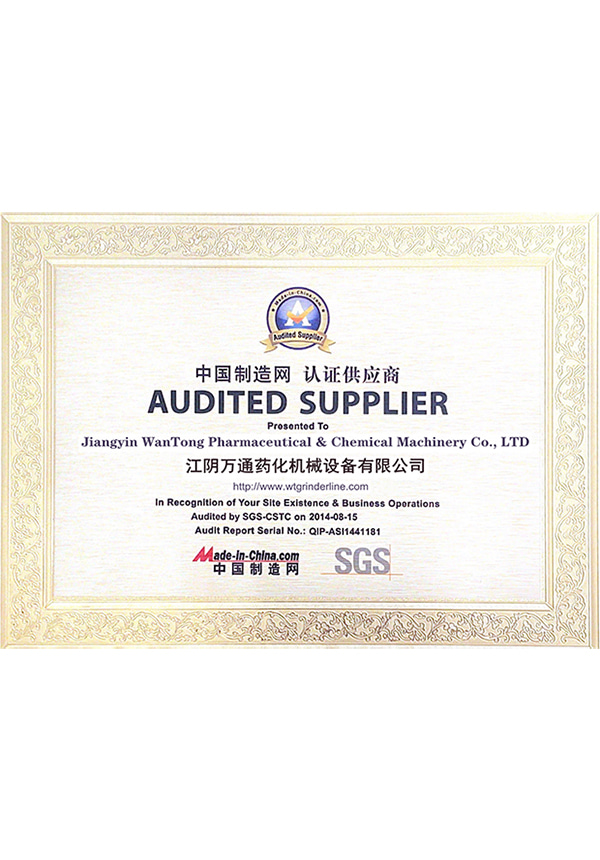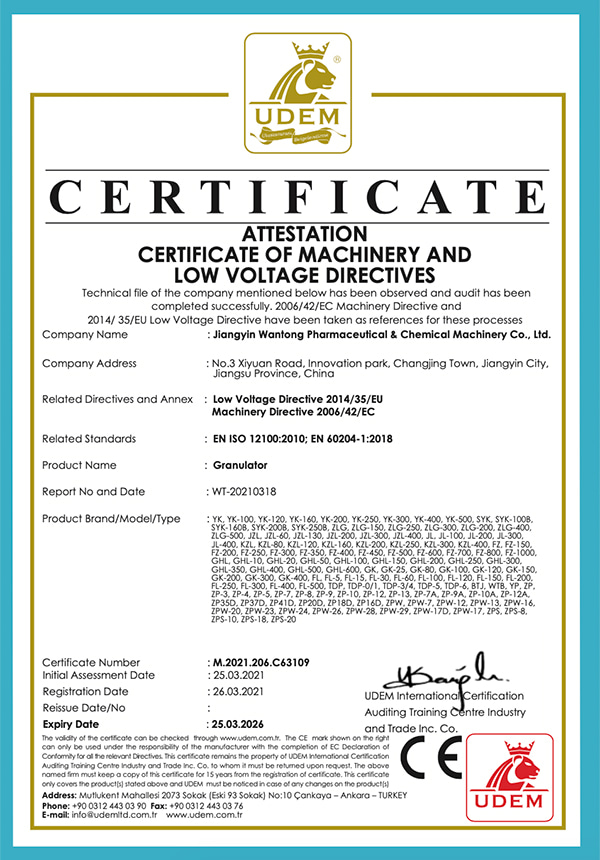Double Screw Mixer Manufacturer
-

SHJ Vertical Type Double Screw Mixer
This vertical double screw mixer machine is a new type of high efficiency & high precision mixing equipment, widely used in pharmaceutic... -

SHJ High Speed Rotary Double Screw Conical Mixer
SHJ high speed rotary double screw conical mixer is a type of industrial machine used for efficiently and precisely blending dry powders.It ... -

SHJ double screw paddle nauta mixer blender
This double screw mixer is a high efficient mixing machine, it have two screw, when machine work, the two screw will rotary at high speed, m...
The stirring component of the double screw mixer consists of two asymmetric cantilever spirals; The device repeatedly lifts the material through the spiral rotation, generating composite movements such as shear, convection, and diffusion within the cone, thereby achieving the purpose of mixing. The product can be designed with external jacket (heating and cooling) and spray according to the requirements, which are widely used in mixing and reaction of chemical, pharmaceutical, pesticide, dye, building materials and other powder and powder.

About Us
Honor
-
 Honor
Honor -
 CE
CE
News
-
Industry News 2025-10-22
1. What a Horizontal Ribbon Mixer Is and Where It’s Used A horizontal ribbon mixer is an industrial ...
View More -
Industry News 2025-10-16
A tray dryer is a batch drying equipment widely used in the pharmaceutical, food, and chemical indus...
View More -
How does a double cone blender compare to ribbon blenders or V-blenders for industrial applications?Industry News 2025-10-09
A double cone blender has distinct advantages and limitations when compared to ribbon blenders and V...
View More -
Industry News 2025-10-01
Electric-Powered Tray Dryers Advantages: Precise and Stable Temperature ControlElectric-powered tr...
View More
Industry Knowledge Expansion
How does a double screw mixer discharge mixed materials?
A double screw mixer, also known as a twin-screw mixer, is a type of mixer that uses two intermeshing screws or rotors to mix materials. The discharge process in a double screw mixer is typically accomplished through the following steps:
Mixing Action: The two screws rotate in opposite directions, intermeshing with each other, which creates a continuous mixing action. This ensures that the materials are thoroughly mixed.
Progressive Discharge: As the screws rotate, they push the mixed material forward through the mixer. The discharge process is often progressive, meaning the material is gradually moved towards the discharge end of the mixer.
Discharge End: The mixed material is discharged through the end of the mixer where the screws terminate. This can be a simple opening or a more complex mechanism depending on the mixer's design.
Valve Control: In some double screw mixers, a valve or gate controls the discharge. This allows for precise control over when the material is released, which can be important for maintaining the quality of the mix and for ensuring that the process is as efficient as possible.
Screw Design: The design of the screws can also influence the discharge process. For example, screws with a decreasing pitch can help to force the material out more quickly, while screws with a constant pitch can provide a more consistent flow.
Automation: Many modern double screw mixers are automated, with sensors and controls that can manage the discharge process. This can include automatically stopping the mixer when the material is fully discharged or when the mixer is empty.
Cleaning: After discharging the mixed materials, the mixer may need to be cleaned to prepare for the next batch. The design of the mixer should facilitate easy cleaning to prevent cross-contamination between batches.
Safety Features: Safety features such as interlocks or emergency stop buttons are often included to ensure that the discharge process can be stopped quickly if necessary.
The exact method of discharge can vary depending on the specific design of the double screw mixer and the requirements of the process it is used in. Some mixers may have additional features such as a vacuum or pressure system to assist with the discharge process.



 Español
Español
